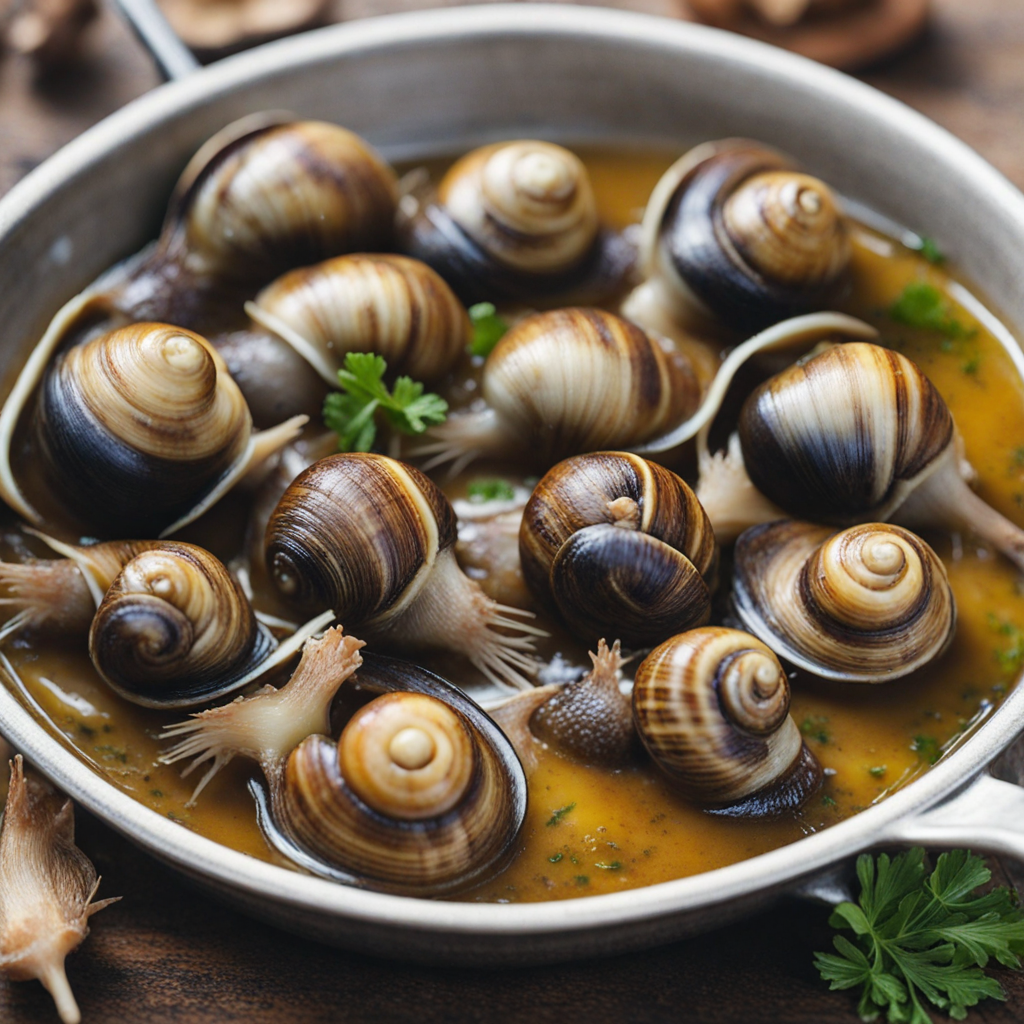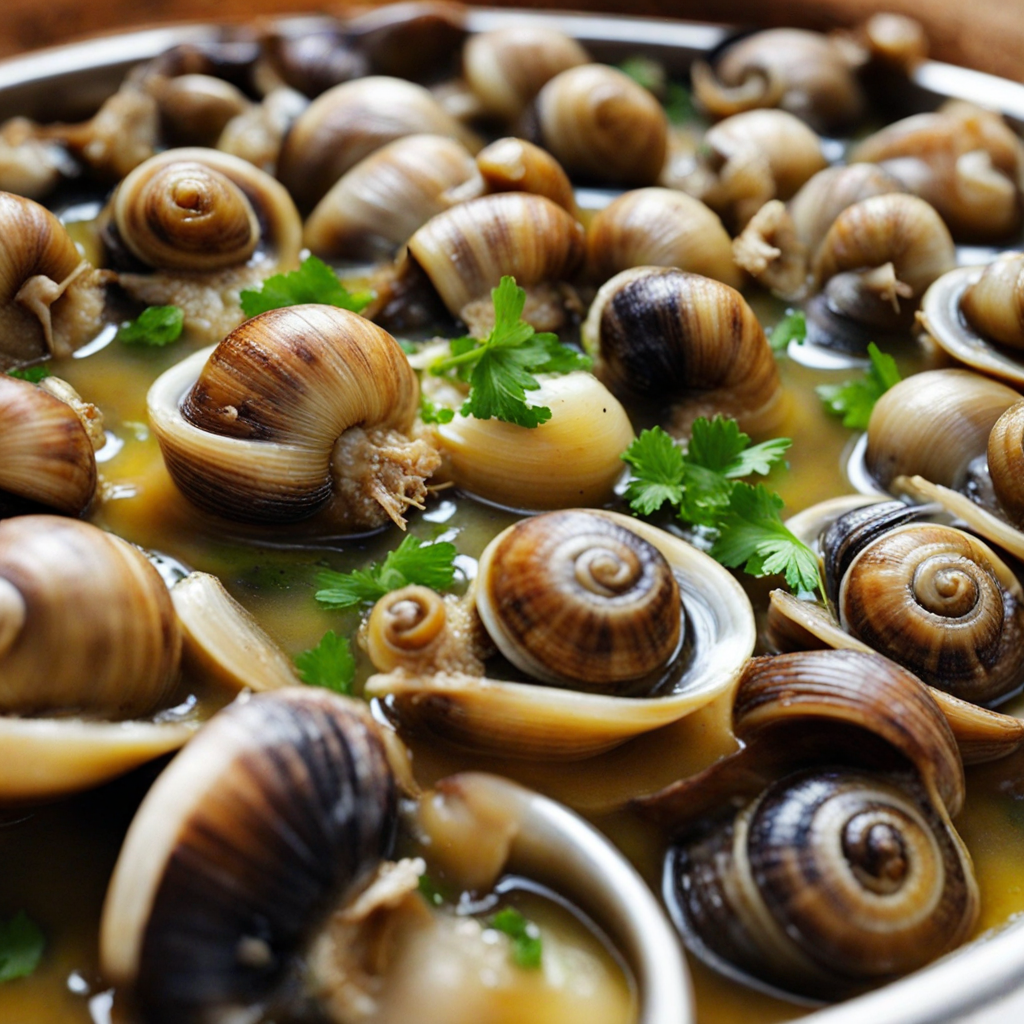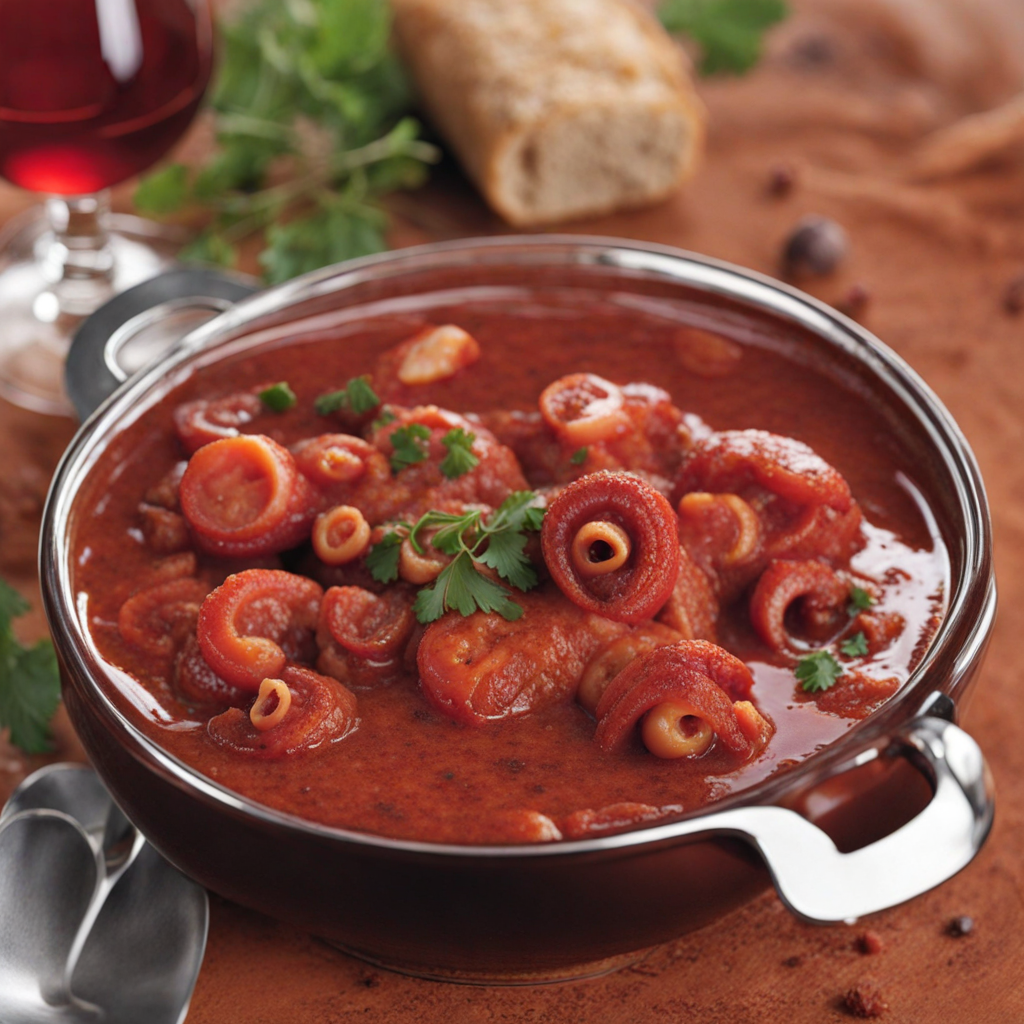Snails in Garlic
Snails in Garlic, a delightful dish from Malta, showcases the unique culinary heritage of the Mediterranean island. This dish features tender land snails, often referred to as 'ħanini' in Maltese, which are carefully cleaned and prepared to highlight their delicate flavor. They are typically cooked in a rich garlic sauce that infuses the snails with aromatic notes, creating a mouthwatering combination that excites the palate. The garlic, often complemented with fresh herbs like parsley and a hint of chili, elevates the dish, making it a fragrant and savory experience that is hard to resist. As you savor each bite, the snails offer a unique texture that is both slightly chewy and succulent, perfectly absorbing the flavors of the garlic-infused sauce. The dish is often served with crusty Maltese bread, allowing you to mop up the flavorful sauce and enjoy every last morsel. This rustic preparation reflects the island's culinary traditions, where simple ingredients are transformed into something extraordinary through the use of bold flavors and techniques passed down through generations. Snails in Garlic is not only a dish that tantalizes the taste buds but also invites a sense of adventure for those willing to try something new. It embodies the spirit of Maltese cuisine, which is influenced by a rich tapestry of cultures, resulting in dishes that are both familiar and novel. Whether enjoyed as part of a larger meal or as a standalone appetizer, Snails in Garlic promises an unforgettable culinary journey that encapsulates the essence of Malta's vibrant food scene.
How It Became This Dish
The History of Bebbux: A Culinary Treasure of Malta Bebbux, the Maltese word for snails, has a storied place in the culinary landscape of Malta. This delicacy, often associated with rustic, traditional cooking, offers not only a taste of the island’s rich heritage but also a glimpse into the cultural practices and agricultural customs that have shaped Maltese cuisine for centuries. The journey of Bebbux from humble beginnings to a celebrated dish is a fascinating one, reflecting the intertwined histories of the Maltese people and their environment. #### Origins of Bebbux The consumption of snails can be traced back to ancient civilizations. Archaeological evidence suggests that mollusks were consumed in various forms in Mediterranean cultures, including those of the Romans and Greeks. When the Phoenicians settled in Malta around 800 BC, they brought with them their culinary practices, which included the use of local resources such as snails. The island's climate, characterized by warm summers and mild winters, is ideal for snail farming, providing a natural habitat for various species. In Malta, snails were not initially viewed as a delicacy; rather, they were a source of sustenance for the island’s early inhabitants. As the local population grew, so did the practice of foraging for snails, particularly during the rainy months when they were most plentiful. The traditional method of gathering snails involved searching the countryside after rainfall, when the mollusks emerged from their hiding places, making them easy to collect. #### Cultural Significance Bebbux is more than just a dish; it is a cultural symbol that embodies the rural heritage of Malta. Traditionally, Maltese families would gather to collect snails, turning the activity into a communal event. The gathering of snails was often accompanied by stories, songs, and laughter, reinforcing social bonds among participants. This aspect of communal foraging highlights the importance of food not only as sustenance but also as a means of fostering community. In Maltese cuisine, Bebbux is often prepared in a variety of ways, reflecting the island's diverse culinary influences. The most common method of preparation involves a simple yet flavorful recipe where snails are cooked in a rich sauce made with garlic, parsley, and olive oil. This dish is typically served as an appetizer and is enjoyed during family gatherings and special occasions. The significance of Bebbux also extends to religious and seasonal celebrations. In the past, the gathering and consumption of snails coincided with the Catholic feast of St. Paul, which is celebrated in February. This connection to religious observances underscores the role of food in cultural rituals, marking moments of gratitude and reflection. #### Development Over Time As Malta navigated through various historical epochs, the culinary landscape evolved, and so did the preparation and consumption of Bebbux. The Knights of St. John, who ruled Malta from 1530 to 1798, introduced new culinary techniques and ingredients that influenced local cuisine. While the Knights were known for their opulent feasts featuring exotic dishes, they also appreciated the simplicity of local ingredients, including snails. This period saw the introduction of more elaborate cooking methods, with Bebbux sometimes incorporated into more refined dishes. In the 19th century, as the British took control of Malta, the island was further exposed to new culinary ideas. The British influence introduced the practice of canning, which allowed for the preservation of snails for export. This marked a significant shift in the perception of Bebbux from a local delicacy to a product with commercial potential. Canned snails began to appear in markets, making this traditional food accessible to a broader audience beyond Malta. The 20th century brought about significant changes in food production and consumption patterns. With the rise of industrialization and urbanization, traditional practices began to wane. However, the late 20th century also witnessed a resurgence of interest in traditional foods, spurred by a growing movement towards local and organic produce. As Maltese society became more aware of the importance of preserving culinary heritage, Bebbux found its way back to the forefront of Maltese cuisine. Today, Bebbux is celebrated not only as a traditional dish but also as a symbol of sustainable eating practices. Local farmers and chefs are increasingly promoting the consumption of snails as an eco-friendly alternative to more resource-intensive livestock. Snails require minimal land and water to raise, making them an attractive option for sustainable agriculture. This shift in perception aligns with global trends towards more conscious eating habits, positioning Bebbux as a dish that is both traditional and forward-thinking. #### Bebbux in Contemporary Malta In contemporary Malta, Bebbux is often featured on restaurant menus, particularly in establishments that focus on traditional Maltese cuisine. Chefs are experimenting with different flavors and presentation styles, elevating the humble snail to new culinary heights. Some variations include Bebbux cooked with local wines or incorporated into pasta dishes, showcasing the versatility of this ingredient. Festivals dedicated to Maltese gastronomy, such as the annual “Taste of Malta” event, often highlight Bebbux as a key component of the local culinary identity. These festivals celebrate the island’s food culture, allowing locals and tourists alike to engage with traditional dishes and learn about their significance. Moreover, the resurgence of interest in local cuisine has prompted initiatives aimed at educating younger generations about the importance of traditional foods like Bebbux. Culinary workshops and programs in schools now include lessons on foraging, cooking, and the cultural significance of local ingredients, ensuring that the legacy of Bebbux continues to thrive. #### Conclusion Bebbux is not just a dish; it is a testament to Malta's rich culinary heritage and the cultural practices that have shaped the island’s identity. From its origins in ancient foraging practices to its place on modern restaurant menus, Bebbux reflects the resilience and adaptability of Maltese cuisine. As Malta continues to navigate the complexities of globalization and sustainability, Bebbux stands as a symbol of the island’s commitment to preserving its culinary traditions while embracing the future. Through every plate of Bebbux served, one can taste not only the flavors of the dish but also the history and stories of the Maltese people.
You may like
Discover local flavors from Malta







